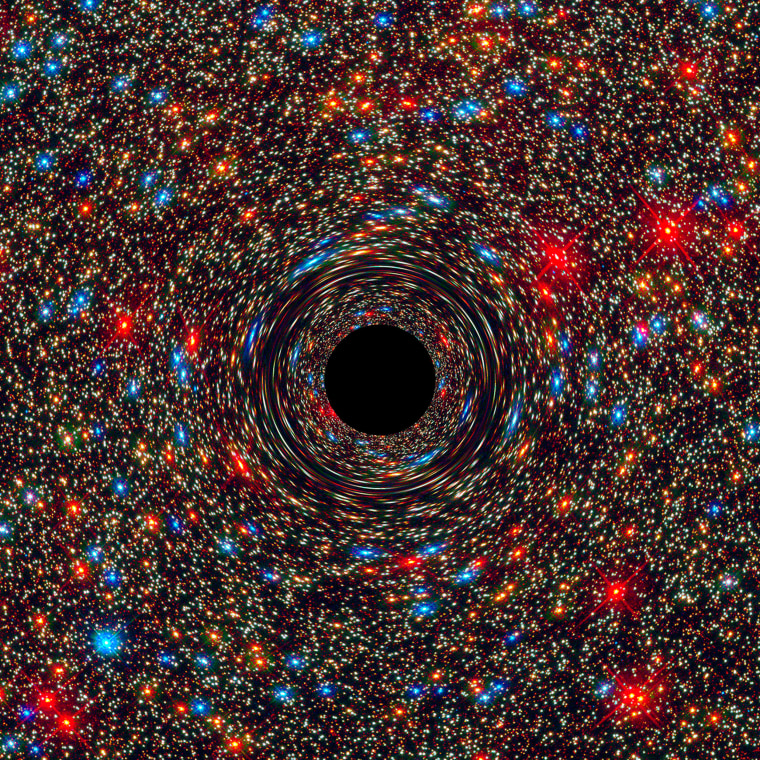One of the biggest black holes ever found sits in a cosmic backwater, like a towering skyscraper in a small town.
Astronomers have spotted a supermassive black hole containing 17 billion times the mass of the sun — only slightly smaller than the heftiest known black hole, which weighs in at a maximum of 21 billion solar masses — at the center of the galaxy NGC 1600.
That's a surprise, because NGC 1600, which lies 200 million light-years from Earth in the constellation Eridanus, belongs to an average-size galaxy group, and the monster black holes discovered to date tend to be found in dense clusters of galaxies. So researchers may have to rethink their ideas about where gigantic black holes reside, and how many of them might populate the universe, study team members said.
Read More: Astronomers Detect Visible Light from Black Hole for the First Time
"The black hole is much bigger than we expected for the size of the galaxy or where this galaxy lives, the environment," said study co-author Chung-Pei Ma, an astronomer at the University of California, Berkeley.
"That's the puzzling part — or the intriguing part — of the result," she told Space.com. "There may be more NGC 1600s out there lurking at more ordinary sites, like small towns in the U.S. rather than Manhattan."Ma is head of the MASSIVE Survey, a multi-telescope effort that began in 2014 to identify and catalog the most massive nearby galaxies and black holes. NGC 1600 first showed up in the survey with data from the McDonald Observatory in Texas.
Although the initial observations weren't detailed enough to see the spectrum of light from the galaxy's center clearly, Ma and her colleagues could already tell that they were looking at something extraordinary: "It was a little bit like looking at a hurricane from very far away," she said. "We couldn't quite tell how big this hurricane was, this black hole was, but the hurricane was so big that we already started to feel the wind using this coarser data."
Read More: New Stephen Hawking Hypothesis Says Black Holes Have 'Hair'
Suspecting they had spotted a very large black hole, study team members next investigated the elliptical galaxy using the northern half of the Gemini Observatory, twin telescopes situated in Hawaii and Chile. Gemini allowed them to probe the black hole's "sphere of influence," Ma said — the region where the black hole's mass held more sway than the overall galaxy's, where it was whipping the stars into action. They also scoped out the site with data from NASA's Hubble Space Telescope.
The stars "were going so fast that the only way they could be travelling at this speed is if you had a 17-billion-solar-mass black hole at the center," she said.

This is a condensed version of an article that appeared on Space.com. Read the original story here. Follow Sarah Lewin on Twitter @SarahExplains. Follow us @Spacedotcom, Facebook or Google+.